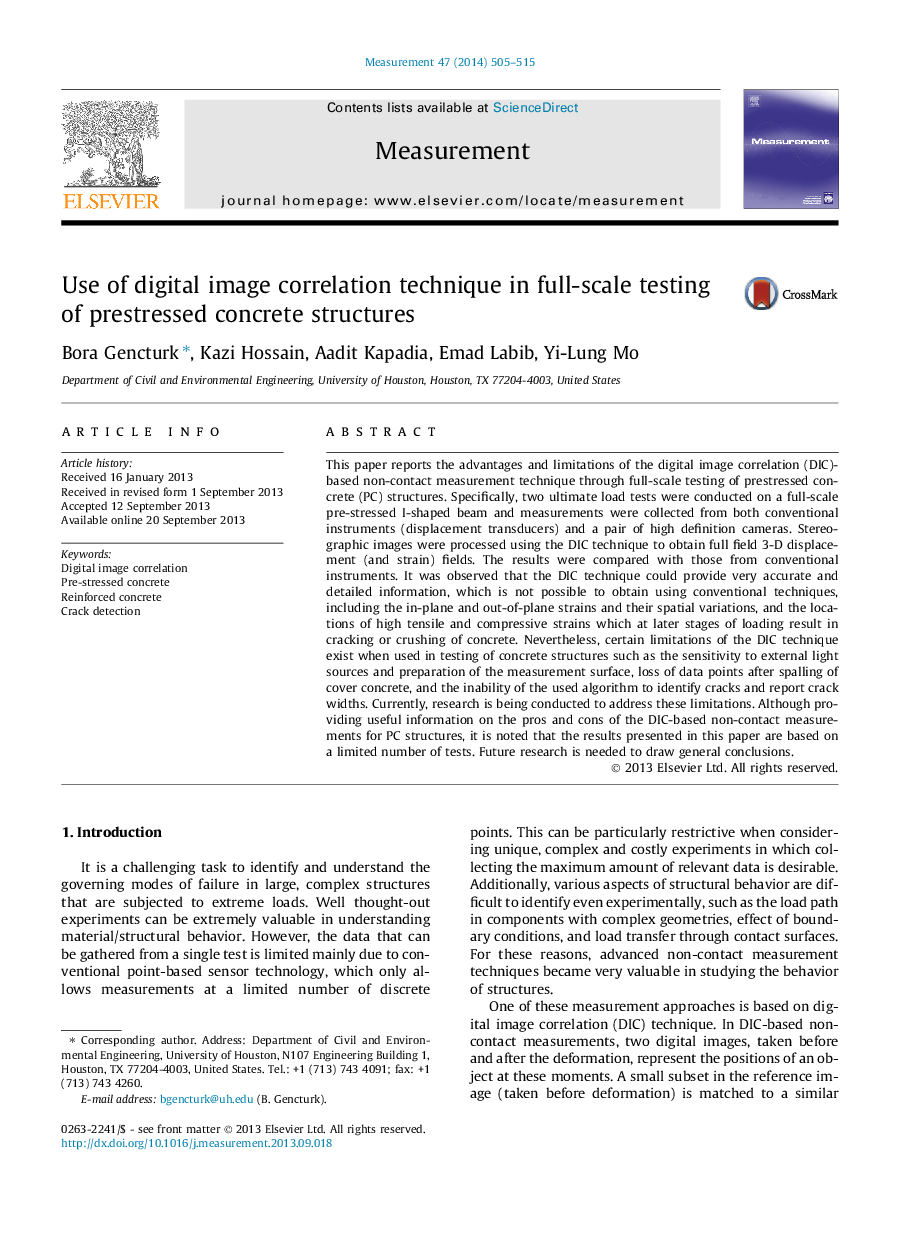| Article ID | Journal | Published Year | Pages | File Type |
|---|---|---|---|---|
| 7126313 | Measurement | 2014 | 11 Pages |
Abstract
This paper reports the advantages and limitations of the digital image correlation (DIC)-based non-contact measurement technique through full-scale testing of prestressed concrete (PC) structures. Specifically, two ultimate load tests were conducted on a full-scale pre-stressed I-shaped beam and measurements were collected from both conventional instruments (displacement transducers) and a pair of high definition cameras. Stereographic images were processed using the DIC technique to obtain full field 3-D displacement (and strain) fields. The results were compared with those from conventional instruments. It was observed that the DIC technique could provide very accurate and detailed information, which is not possible to obtain using conventional techniques, including the in-plane and out-of-plane strains and their spatial variations, and the locations of high tensile and compressive strains which at later stages of loading result in cracking or crushing of concrete. Nevertheless, certain limitations of the DIC technique exist when used in testing of concrete structures such as the sensitivity to external light sources and preparation of the measurement surface, loss of data points after spalling of cover concrete, and the inability of the used algorithm to identify cracks and report crack widths. Currently, research is being conducted to address these limitations. Although providing useful information on the pros and cons of the DIC-based non-contact measurements for PC structures, it is noted that the results presented in this paper are based on a limited number of tests. Future research is needed to draw general conclusions.
Related Topics
Physical Sciences and Engineering
Engineering
Control and Systems Engineering
Authors
Bora Gencturk, Kazi Hossain, Aadit Kapadia, Emad Labib, Yi-Lung Mo,
